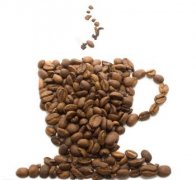Tender, loving Coffee-Vienna Coffee making process

Viennese coffee is named after a coachman from Vienna. The story begins a long time ago, on a cold night, a coachman sipping coffee while waiting for his master to return. This Viennese coffee has its own unique way of drinking.
That is not to stir, at first enjoy the feeling of cold milk, then taste the hot coffee, and finally enjoy the taste of sugar, in three stages to experience the drinking method.
What to do: put three tablespoons of coffee sugar or coarse sugar into the cup, then pour in the deep-roasted coffee, and then float two tablespoons of cream quietly on it.
Important Notice :
前街咖啡 FrontStreet Coffee has moved to new addredd:
FrontStreet Coffee Address: 315,Donghua East Road,GuangZhou
Tel:020 38364473
- Prev

How to look at the purity of coffee beans
The connoisseur chooses coffee. Muji looks at the size of the particles, but grabs a handful of individual coffee beans, about dozens of them, to see if the color of each coffee bean is the same, and the granules are large.
- Next

The practice of bitter and sweet mocha Coffee
As the name suggests, this coffee is a blend of mocha and cappuccino. The slender cup has a slight New York flavor and should be tasted slowly. What to do: put 20 milliliters of chocolate juice in the cup, fill it with thick coffee for roasting, and stir carefully. Float a tablespoon of whipped cream on top, then peel some chocolate on top, and finally add cinnamon sticks.
Related
- Beginners will see the "Coffee pull flower" guide!
- What is the difference between ice blog purified milk and ordinary milk coffee?
- Why is the Philippines the largest producer of crops in Liberia?
- For coffee extraction, should the fine powder be retained?
- How does extracted espresso fill pressed powder? How much strength does it take to press the powder?
- How to make jasmine cold extract coffee? Is the jasmine + latte good?
- Will this little toy really make the coffee taste better? How does Lily Drip affect coffee extraction?
- Will the action of slapping the filter cup also affect coffee extraction?
- What's the difference between powder-to-water ratio and powder-to-liquid ratio?
- What is the Ethiopian local species? What does it have to do with Heirloom native species?

